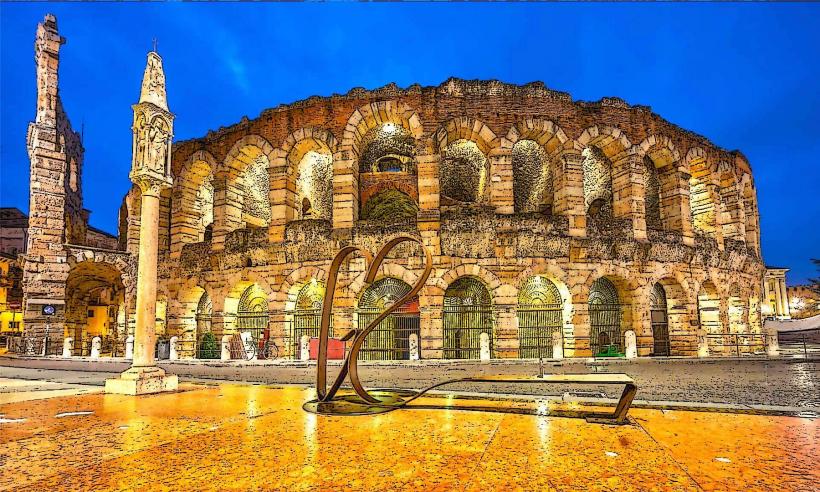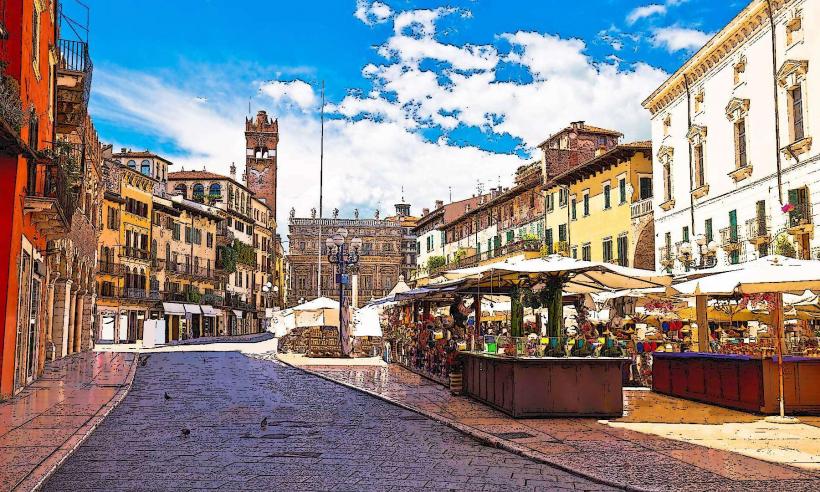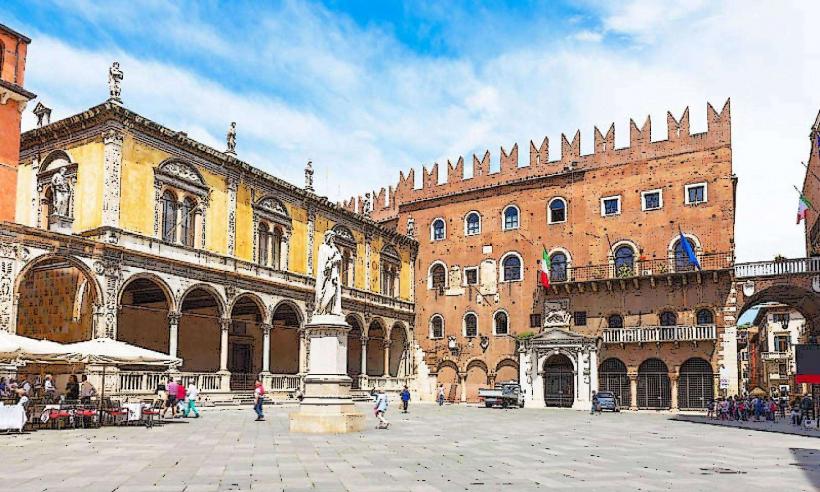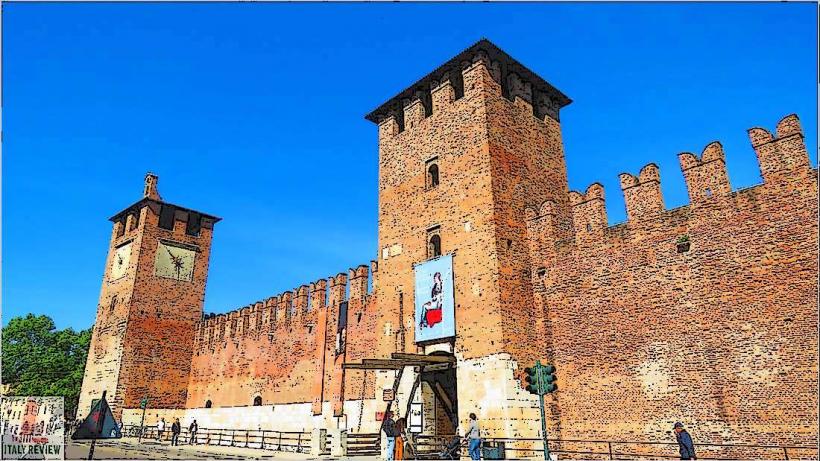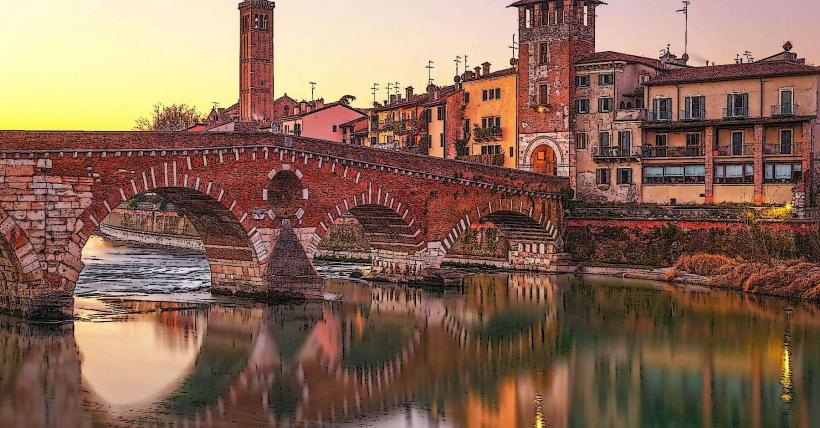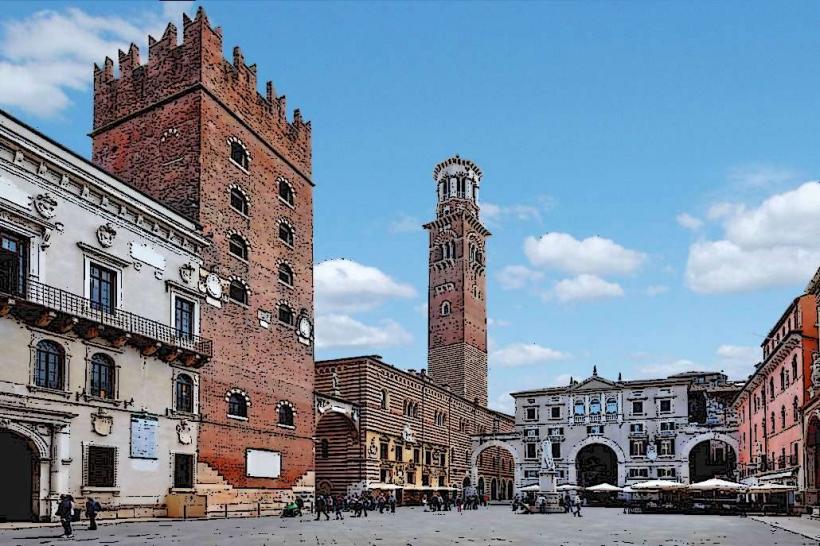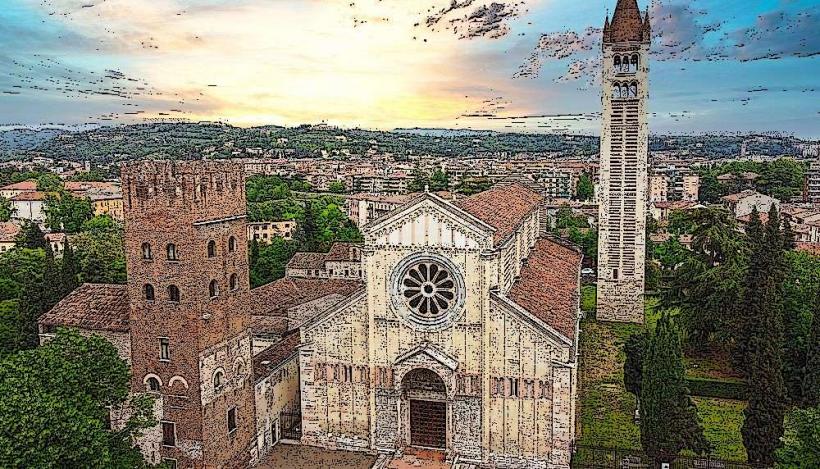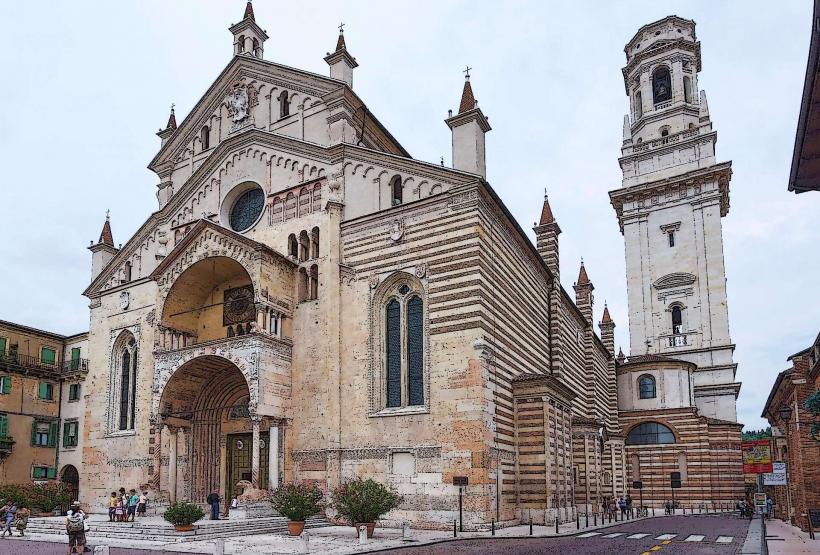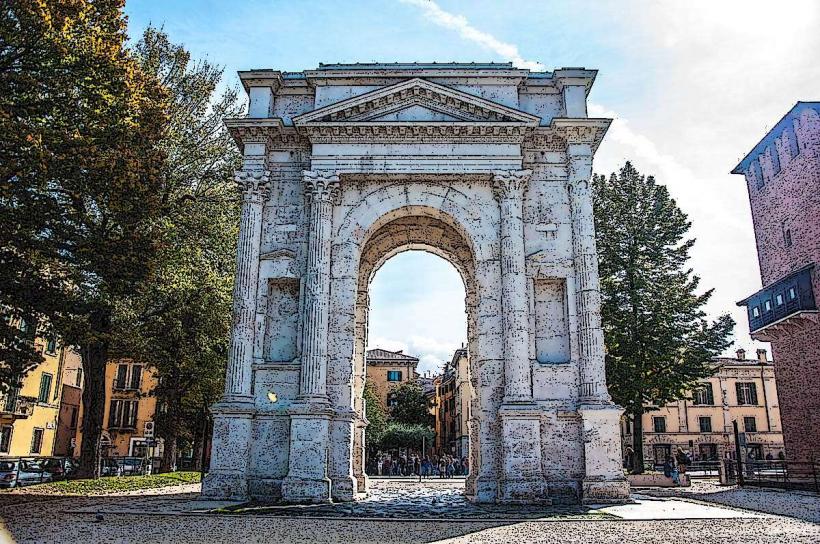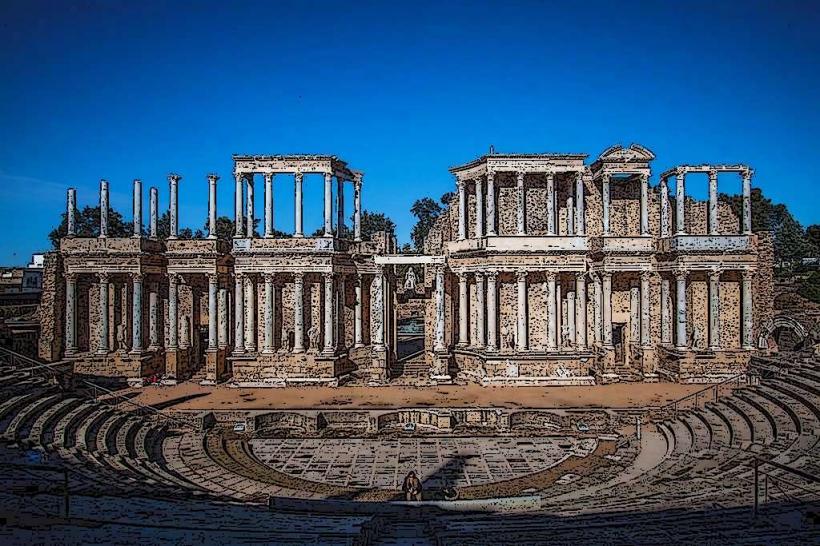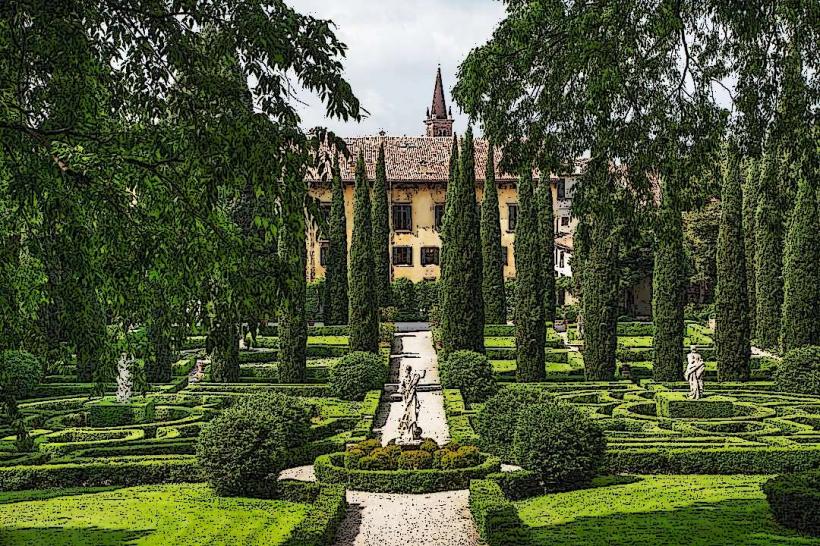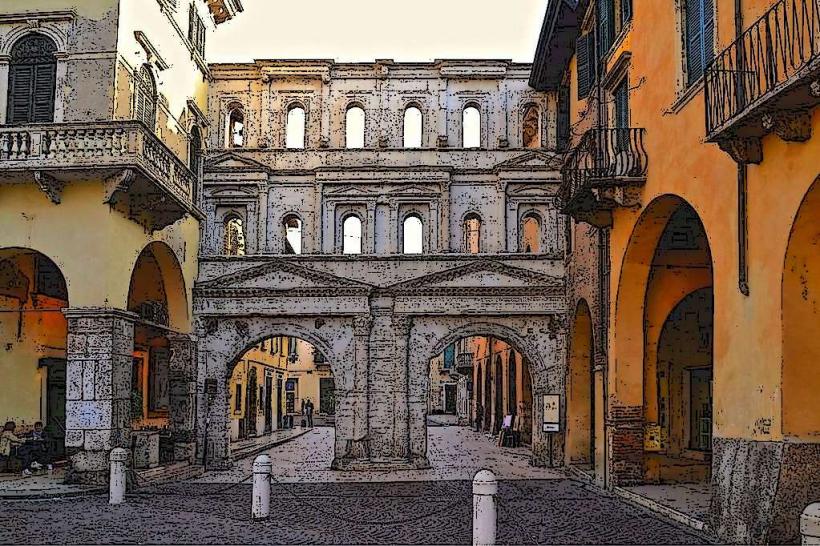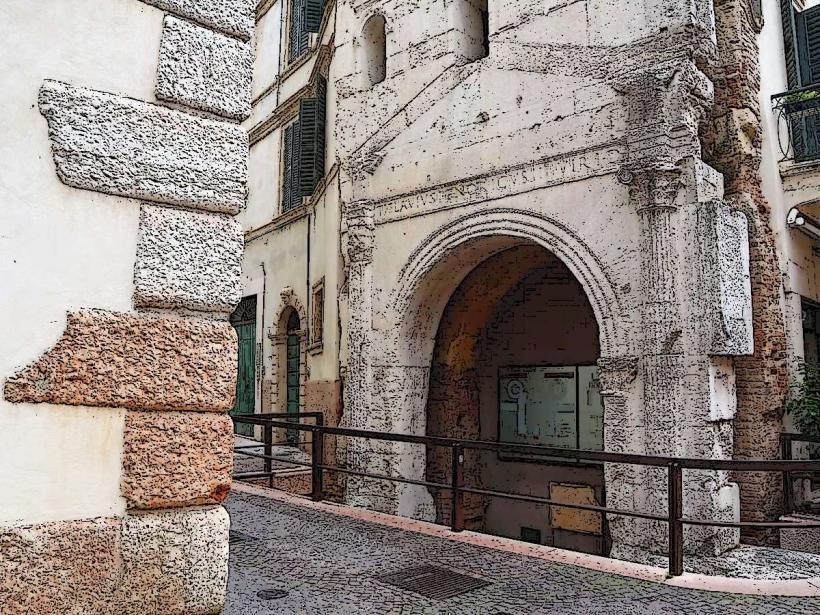Information
Landmark: Casa di GiuliettaCity: Verona
Country: Italy
Continent: Europe
Juliet's House (Casa di Giulietta) in Verona is a 13th-century building with strong associations to William Shakespeare’s tragic love story, Romeo and Juliet. The house, located on Via Cappello, has become a romantic landmark due to its iconic balcony, where many imagine Juliet calling out to Romeo in Shakespeare’s play. Though the story is fictional, the Capulet family (Juliet’s family in the play) was real, and the building is popularly thought to have belonged to the Dal Cappello family, whose name resembles "Capulet."
1. Historical Background
- Origins: The house dates back to the 13th century and is a fine example of medieval Verona architecture, featuring red brick walls, a Gothic-style facade, and original stonework.
- Shakespearean Connection: The legend of Romeo and Juliet and their association with this building arose in the 19th century, solidified by Shakespeare’s play. Over time, it became known as Juliet’s house, and Verona embraced this connection as part of its cultural heritage.
- Restoration: In the 1930s, the house underwent restoration to match the setting of the play, which included adding the famous balcony that visitors see today.
2. The Balcony
- Symbol of Romance: The stone balcony is the main attraction, drawing thousands of visitors who recreate the famous scene and take photos. Though it was added later, it has come to symbolize the longing and romantic ideals in Romeo and Juliet.
- Views from the Balcony: Visitors can access the balcony and view the courtyard below, where people often gather to take photos and embrace the story's romance.
3. Statue of Juliet
- In the courtyard below the balcony stands a bronze statue of Juliet, crafted by sculptor Nereo Costantini in 1972. Legend has it that touching Juliet’s right breast brings good luck in love, and this tradition has led to the statue becoming polished in that spot.
- Visitors often take photos with the statue and leave messages or locks nearby as symbols of their own romantic hopes.
4. Inside Juliet's House
- Museum and Exhibits: The interior is now a small museum with furniture, costumes, paintings, and artifacts that depict life in Verona during the Renaissance period. These items, though not directly tied to Juliet, help evoke the era in which the story was set.
- Love Letters: Visitors leave love letters or notes on the walls or in a nearby mailbox, a tradition popularized by the book and movie Letters to Juliet. These letters express wishes, dreams, and heartaches, and volunteers known as "Juliet's Secretaries" sometimes write responses.
5. Wall of Love Notes
- Messages from Visitors: Outside, near the entrance, is a wall where visitors leave love notes, messages, and graffiti. The walls are covered with sticky notes, gum, and inscriptions, each symbolizing people’s personal hopes and stories of love.
- Locks of Love: Many couples also attach padlocks to the railings and fences in the courtyard, symbolizing eternal love.
6. Practical Information for Visitors
- Location: Casa di Giulietta is located at Via Cappello 23, just a short walk from Piazza delle Erbe.
- Tickets: Admission is required to visit the interior and balcony, but the courtyard and statue of Juliet can be visited freely.
- Best Time to Visit: The site can be crowded, especially during the summer and around Valentine's Day, making early mornings or late afternoons the best time to enjoy a quieter experience.
7. Nearby Attractions
- Romeo’s House: A short walk away, visitors can also see the residence believed to be associated with the Montagues, Romeo’s family.
- Piazza delle Erbe and Piazza dei Signori: These central squares are filled with historical sites, cafes, and shops, offering a full experience of Verona’s rich medieval atmosphere.
Juliet's House has become an iconic pilgrimage site for lovers and literature fans alike, capturing the imagination of visitors who wish to connect with one of literature’s greatest love stories.


